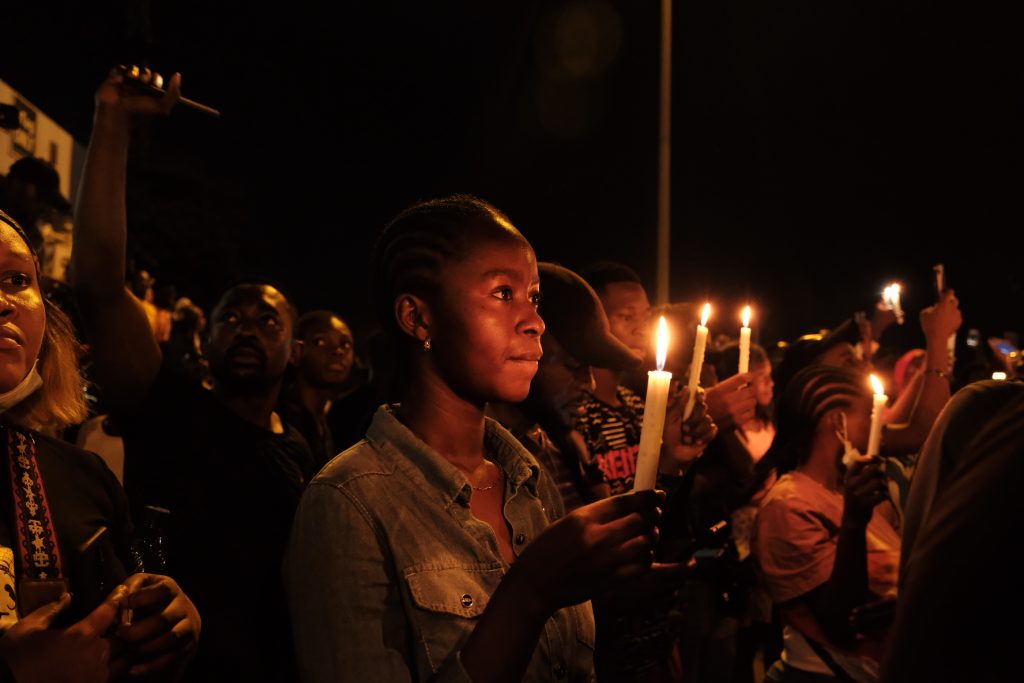The soldiers surrounded them as they sat, holding the Nigerian flag and singing the national anthem in unison. At around 6:50 p.m. on October 20, soldiers took out their guns and began to shoot at the mass of unarmed young protesters assembled at Lekki toll gate in Lagos, who had defied a curfew to demonstrate. Their voices turned from powerful chants to cries of rage and pain.
That night, in what is now known as the Lekki Massacre, at least 10 people were killed in Lagos, two in Alausa, and 30 others across Nigeria, according to Amnesty International. The deadly protest against the Special Anti-Robbery Squad (known as SARS)—a police agency formed in 1984 to combat violent crime that has terrorized Nigerian citizens—has since drawn international attention.
Back home, local artists are working tirelessly to keep the demonstrations in the headlines by producing indelible images that seek to combat misinformation and capture the unprecedented protest movement in real time.
In one black-and-white photograph, a dense crowd of protesters carries signs high above their heads reading “Our lives matter” and “Stop extorting us.” In another, a small group stands on the back of a truck with their fists pointed toward the sky in defiance.
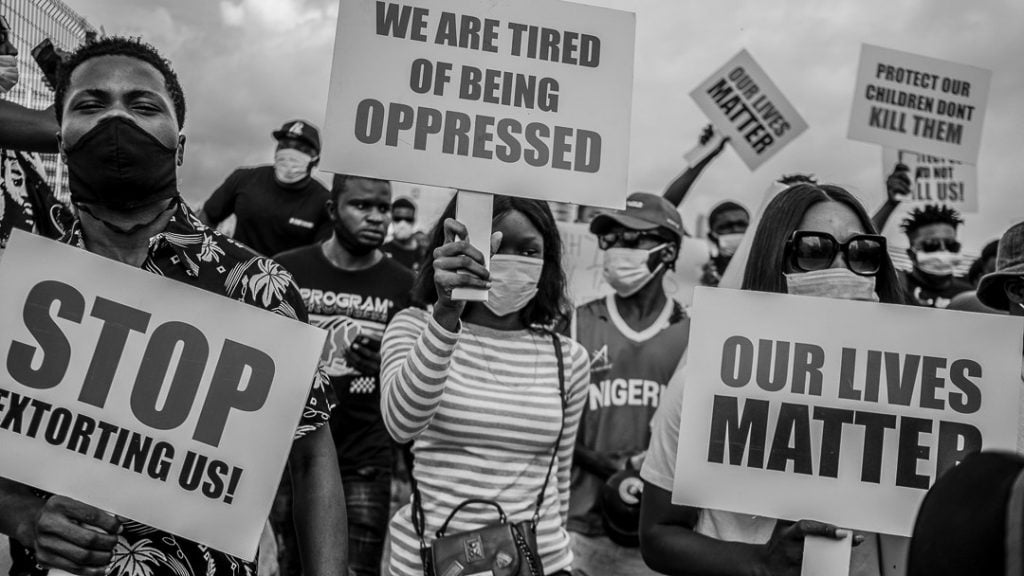
Photographer Grace Ekpu’s documentation of the protests. Courtesy of the artist.
“The parts of the story that Nigerians couldn’t see on TV, they saw on social media,” said Grace Ekpu, a Lagos-based documentary photographer. “Photographing the protest was an opportunity for me to be a witness to history and to share it with others.”
Since the Leikki Massacre, the protests in Lagos have died down, but supports of #EndSARS remain active. The movement is gaining ground elsewhere in Africa thanks in part to the powerful images Nigerian photographers are sending out online, like messages in a bottle.
To Capture the Truth
International organizations are continuing to investigate exactly how many people died on October 20. Eight days after the incident, Amnesty International issued a statement demanding that Nigerian authorities end their attempts to cover up the massacre and bring justice to those behind the shooting.
“Opening fire on peaceful protesters is a blatant violation of people’s rights to life, dignity, freedom of expression and peaceful assembly,” Osai Ojigho, the director of Amnesty International Nigeria, said in a statement. “Soldiers clearly had one intention: to kill without consequences.”
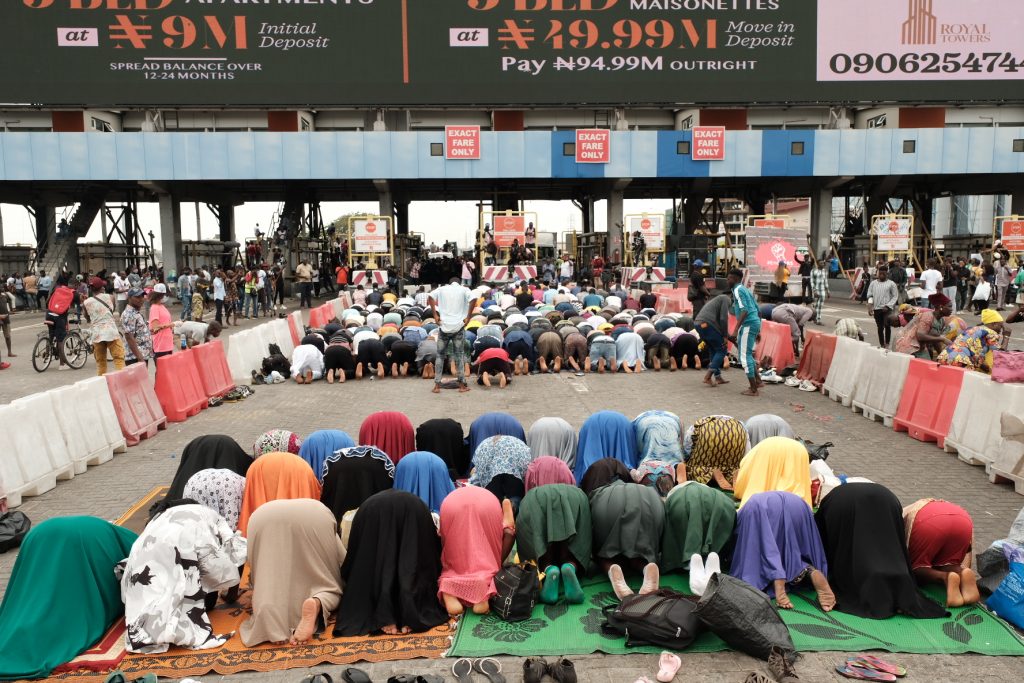
Images of the ENDSARS protests by Anthony Ayodele Obayomi. Courtesy of the artist.
The Lekki Massacre epitomizes the very violence that protesters have long fought to abolish. The demonstrations began in 2017 as a Twitter campaign using the hashtag #EndSARS, demanding that the Nigerian government disband and reform the notoriously corrupt police department. It gained momentum in 2020 as mass demonstrations spread throughout Nigeria’s major cities. The hashtag #EndSARS was shared more than one million times.
After the massacre, the government issued a strict three-day curfew where everyone was asked to stay home. But Nigerians’ call for change continued abroad; marches popped up in London on October 24. While the government announced it would disband the SARS unit before the massacre, the government is now under growing pressure to make good on its word and deliver more tangible reforms.
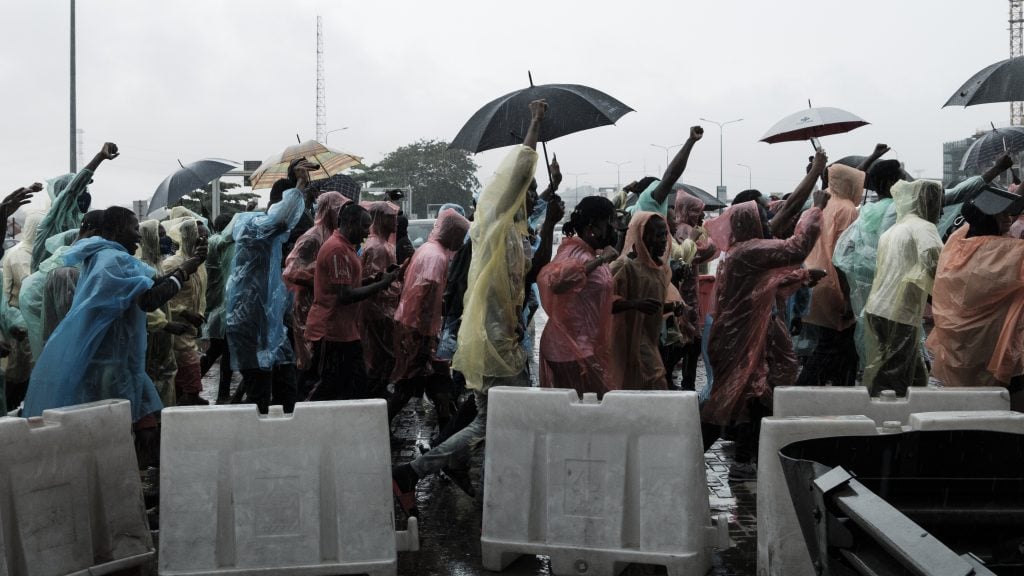
Photography by Ifebusola Shotunde. Courtesy of the artist.
Artists Affected
Amid the unrest, Nigerian artists have taken it upon themselves to amplify protesters’ messages.
“Everybody has a SARS story,” Grace Ekpu said. “I have had my own challenges as well. SARS has also been harassing women, sometimes just on the basis of how they look. Many people have allegedly been killed or have gone missing if they did not cooperate with these officers.”
Photographer Ifebusola Oluwafunmilayo Shotunde, whose hair is styled in a prominent mohawk, says he is regularly accosted by the police, who profile him as a “yahoo boy” or scammer. As a result, it has become difficult for him to travel openly to see his mother in Lagos mainland. “Mohawks aren’t something you see every day in Lagos and the police harass eccentric young citizens,” he said.
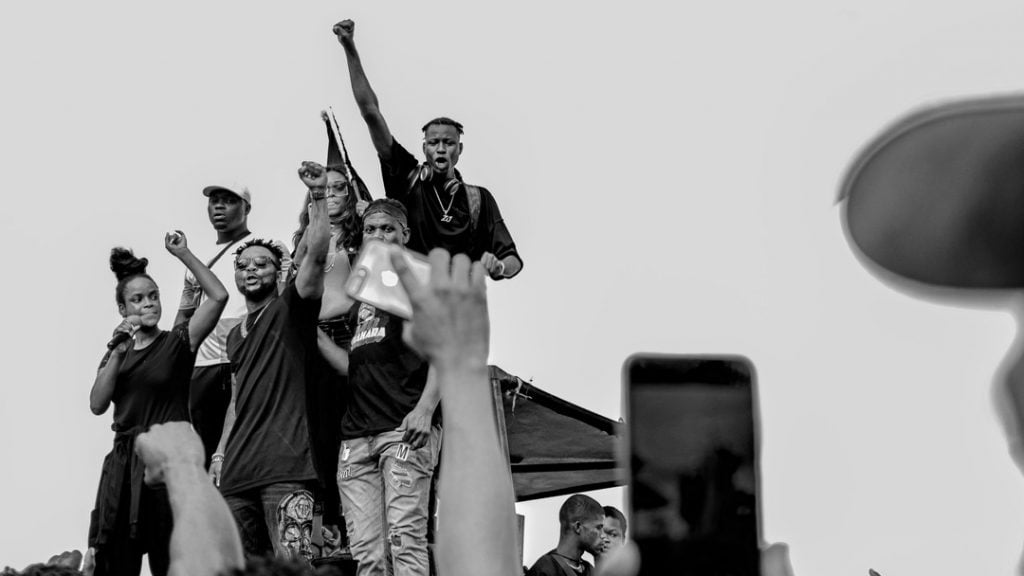
Photographer Grace Ekpu’s documentation of the protests. Courtesy of the artist.
When Shotunde showed up on the first day of the 12-day protest, he thought the uprising would be short-lived. “I’ve seen and attended protests in Nigeria and they usually start off with so much energy and then after one or two days they die down, but with this one the energy was so real,” he said. “I had never seen anything like it before; people from different tribes and socio-economic classes coming together to fight for one thing in Lagos was unseen and unheard of.”
Shotunde’s images show Nigerians waving their green and white striped flag in unison, running in the streets, and holding signposts demanding an end to police brutality. Despite his bad back, he was on the ground day and night for the first six says. “I wanted to show how peaceful and organized they were,” he said. “This was the beginning of a new era in Nigeria.”
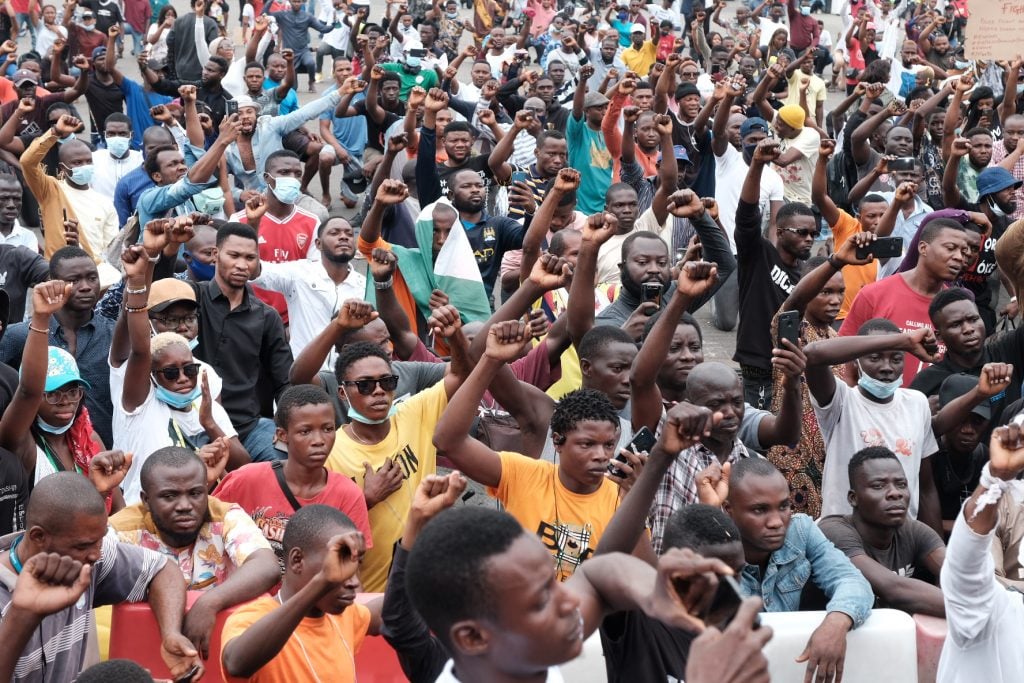
Images of the ENDSARS protests by Anthony Ayodele Obayomi. Courtesy of the artist.
Photographer Anthony Ayodele Obayomi, meanwhile, showed up every day, bobbing and weaving in the heavy crowds. He captured not only the moments of triumph, but also the tired and forlorn expressions of worn-out demonstrators. While he normally does not distribute his images on social media, he chose to share one each day to get the news out as quickly and widely as possible.
“As a documentary photographer and artist, what I had best to contribute to the protests were my skills enabling me to document the moment and share it with as many people who cared to listen,” Obayomi said.
On the day of the massacre, Obayomi couldn’t reach the protest grounds due to the number of roadblocks throughout the city. So he went onto Instagram Live to see what was happening and read the announcement of the new curfew. Then, predominantly through the livestream of the prominent Nigerian performer DJ Switch, Obayomi and others saw the shooting take place.
Fighting Fake News
For many artists, the need to document has become only more important in the wake of October 20. “There has been a lot of fake news flying around, accusations and denial from the government that the shooting did not happen and that the protesters were not peaceful,” Obayomi said. “If my work did not exist, people may not see how peaceful the protests were, how Nigerians shared food and medication, and security with one another.”
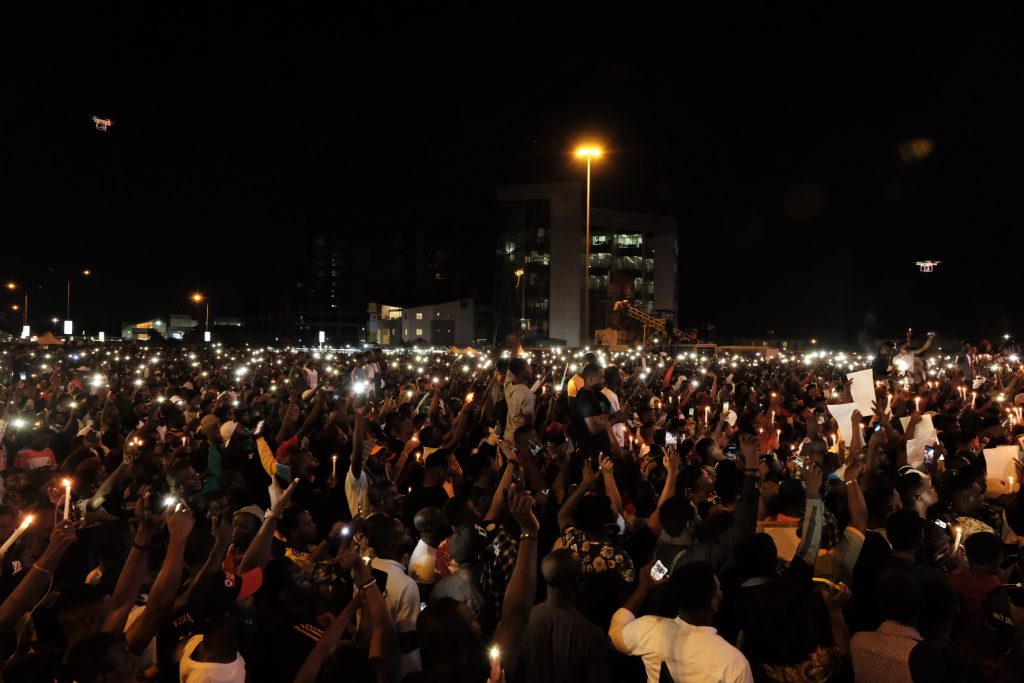
Images of the ENDSARS protests by Anthony Ayodele Obayomi. Courtesy of the artist.
Several images taken before the massacre also show masses of protesters holding candles against the pitch darkness of the night sky during an all-night vigil held in Lagos and Abuja on October 16. These vigils, also called the Festival of Lights, were a solemn memorial to the victims of police brutality in Nigeria.
“The #EndSARS movement is the most important thing I have photographed in my entire career,” said photographer Nyancho NwaNri, a lens-based artist who regularly works in fine art or conceptual photography revolving around African spirituality, tradition, and culture as well as social and environmental issues.
“I am a Nigerian first before I am a photographer,” she continued. “I was there as a protester, demanding change for my country. I was there to lend my voice, to fight for our lives and our future.”
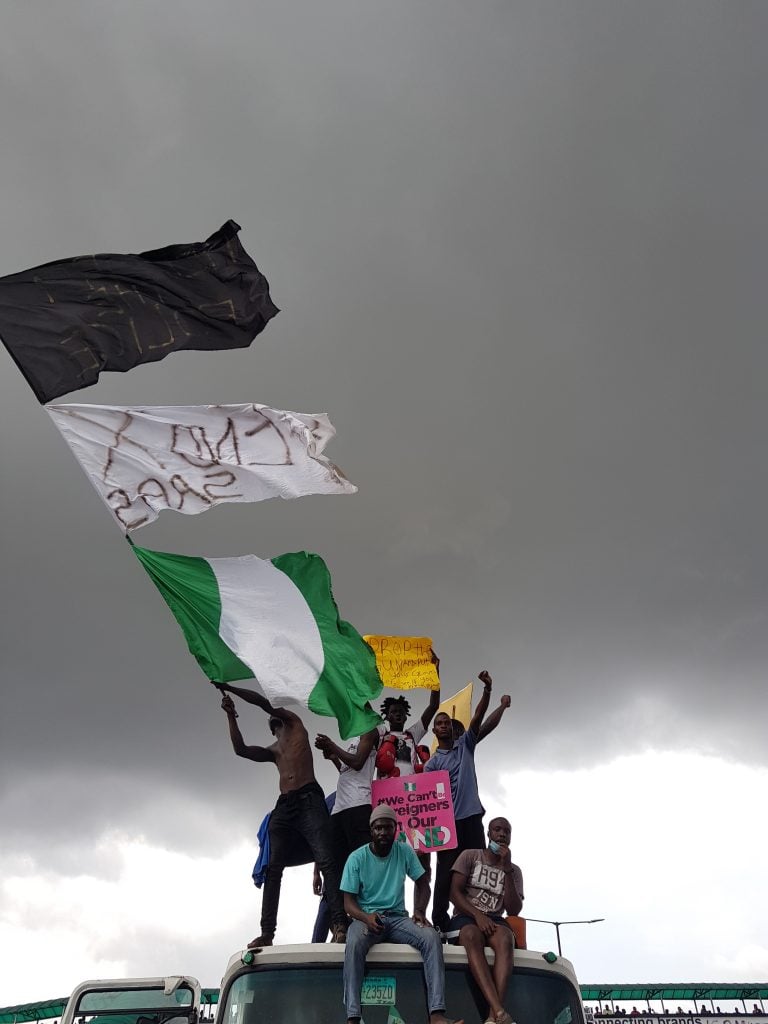
Images of the ENDSARS protests by Anthony Ayodele Obayomi. Courtesy of the artist.
With Help From Nigeria’s Art Scene
Nigeria’s art community is also rallying behind its artists and the broader #EndSARS movement. Last month, the city’s leading international art fair, ART X Lagos, announced its postponement in solidarity with the movement as well as an open call on Instagram for photographers on the front lines to submit work documenting the demonstrations. A selection of these works will be exhibited during the next ART X Lagos fair, which is now scheduled to be held online from December 2 through 9.
“The Nigerian creative community is relentless,” said Azu Nwagbogu, director of the African Artists’ Foundation (AAF). “They are the reason the nation has not completely collapsed and still maintains a degree of respectability internationally through the visual arts, music, literature, sports. But the same community has decided to channel its energies toward change. The community will not tolerate obfuscation and government attempts to divide the movement.”
NwaNri is encouraged by posts on social media that suggest police in other African nations are growing more careful after what happened in Nigeria. “We were also documenting a historical moment in Africa as the protests in Nigeria have spurred movements in other countries,” she said.
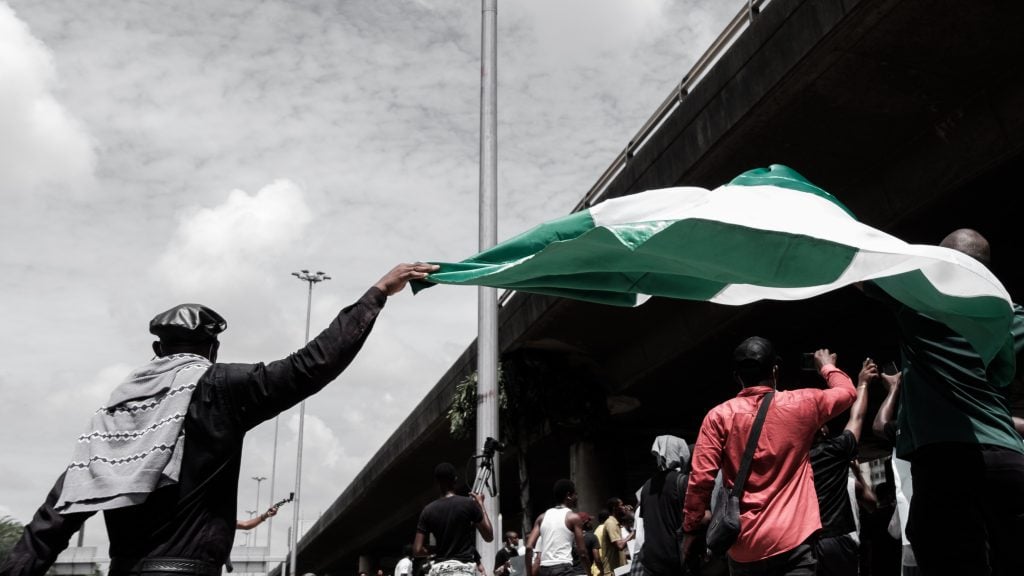
Photography by Ifebusola Shotunde. Courtesy of the artist.
Nigerians’ photographs of the #EndSARS movement memorialize forever an intense desire for change. The protests live on in their poignant imagery, piercing through the multitude of conflicting stories with raw footage and emotion.
“The genie is out of the bottle; it will grant the wishes of the people,” Nwagbogu said. “I hope that young people all over Africa can stand up to the demand to end bad governments dominated by dictators. I expect to see members of the art community take up politics in an active way.”
